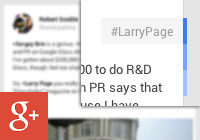It is here…it works…and it is not going anywhere. I just received my latest edition of Fast Company magazine and I was reminded why this community technology is continually transforming the way we converse.
Even this article #UNPLUG surrounds the conversation of turning off electronics so we can “power back up.” An oxymoron that is using the hashtag technology to connect people and conversations meant to fuel the need to disconnect digitally. The irony…using hashtags to fuel conversations about disconnecting from the mere technology fuels connectivity.
That is my point…the hashtag platform is beyond flexible…it is now integrated across multiple social technologies.
It was Spring 2011 and I was meeting with one of my clients as we were planning a series community events. A part of the strategy to aggregate and engage conversation, I recommended using a branded hashtag to engage regular Twitter chats.
I remember sitting across the room from another vendor who was coordinating this event. Their statement…no one uses hashtags and it will not work. They actually made small chat with comments under there breathe making fun of the idea. Then…they looked at me and asked about my contract with the client. I guess they had not been watching all the #TEDxGVL events. This Greenville community was engaging in conversations during these TEDx events…chatting from the event on Twitter along with those watching from the live stream.
That same year…that same month in 2011…regular chats from health care to blogging were powered by Hashtags connecting millions of people. From #BlogChat, #HealthCareChat, and even Major League Baseball’s #postseason chat…people were connecting, engaging, and sharing conversations.

Take a look at Facebook’s announcement integrating hashtags into status updates, creating conversation portals.
Hashtracking.com has now moved out of beta and provides a powerful tool for monitoring and measuring the conversations during and after hashtag chats and conversations. They are placing metrics on the number of tweets, engagement, reach, most influential, and more.
I look at the hashtag as another technology connection people and providing a platform to record the documentary of the community conversation. We can now watch conversations evolve; see videos, pictures, and links shared based on a time stamp.
I wish I was back in that meeting from 2011…I would love to give the group of naysayers a simple lesson: don’t make fun of what you don’t understand.



